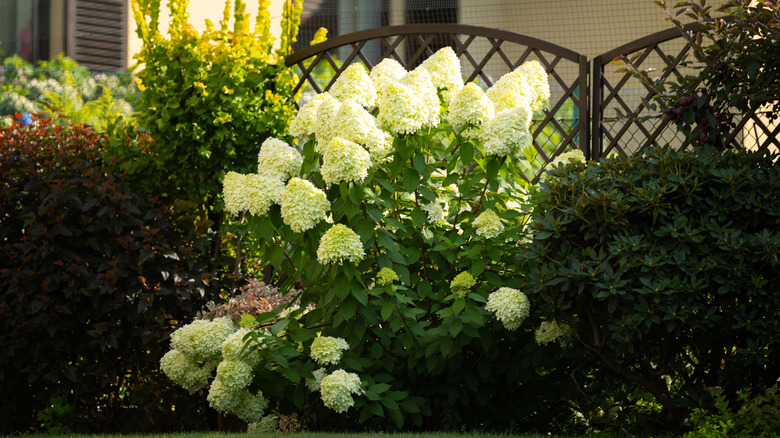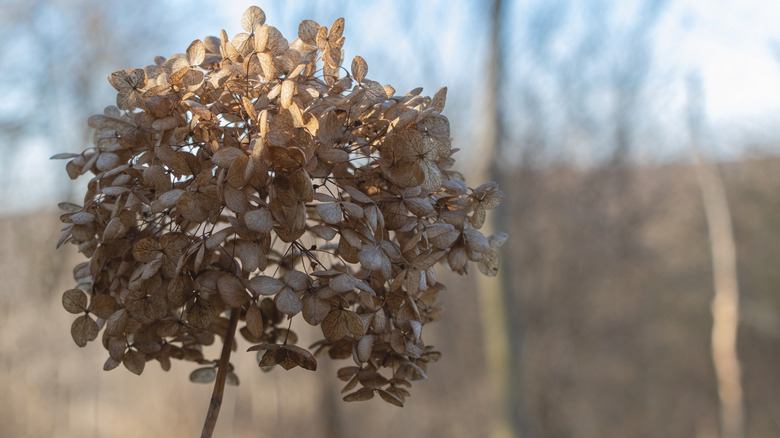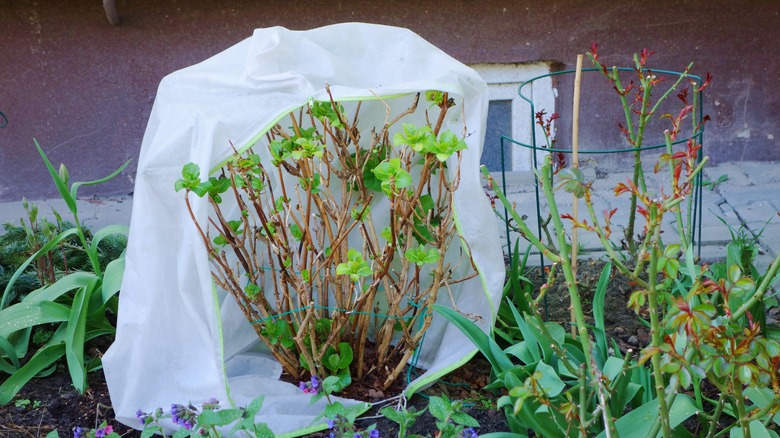Winter-Proofing Your Hydrangeas? Avoid These Mistakes At All Costs
Hydrangeas (Hydrangea spp.) are dazzling to the eye with their large, clustered blooms, which is why they are popular with gardeners. While these perennial shrubs are mostly easy to tend to, there are some special considerations to take into account. If you want them to thrive, you have to winter-proof your hydrangeas in the fall before temperatures start to drop. Just keep in mind that there's a right and a wrong way to accomplish this task. For instance, you should avoid adding fertilizer, pruning, and ignoring the plant throughout the winter.
Not all hydrangea varieties need special treatment leading up to the colder months. If your plant blooms in mid to late summer, it's likely smooth or panicle hydrangeas, which are hardy enough to make it through harsh conditions without any fuss. On the other hand, if your plant blooms in spring or early summer, you probably have a big leaf or oakleaf, which can be vulnerable to winter weather. Those who live in regions that experience extreme cold or dry winters should take extra precautions to protect their hydrangeas. It's best to start winter-proofing in late fall, a few weeks before the first frost.
Mistakes to avoid when winter-proofing hydrangeas
Many winter-proofing mistakes tend to be a misguided attempt to care for your hydrangeas. For instance, you may believe fertilizing your shrub before winter will give it a boost come spring. However, if you fertilize after August, you could inadvertently prompt new tender growth that won't survive cold temperatures. This can make your plant more vulnerable to frost damage and reduce its blooming potential in the warmer months. So as much as you might want to feed your plant, hold off on fertilizing.
Some gardeners think pruning their hydrangeas before winter will help it thrive in the next growing season. This is another mistake as pruning in the fall can actually increase the likelihood of winter damage. Save pruning for the spring. If your plant really needs a trim, stick to dead or damaged wood only. You also might not realize that you need to monitor your hydrangeas throughout the winter. Be sure to shake off excess snow from branches to prevent damage. Keep an eye on the temperature to see if your plant will need water or extra protection during cold snaps. Following these winter rules, as well as these gardening tips and tricks will give you successful hydrangea blooms every year.
Caring for your hydrangeas in the winter
In order to keep your hydrangeas healthy through the winter, try these simple methods for success. Start by applying compost at the base of your shrub. Unlike fertilizer, compost won't trigger premature growth. It will break down during the winter and offer a cache of nutrients ready just in time for spring. You will need to apply the compost before putting anything else down. Next, collect about 3 to 4 inches of shredded leaves or bark mulch and pile it up around the base of the hydrangeas. This will insulate the roots and maintain moisture levels.
Once you've covered your hydrangeas, they'll be ready to face the harsh winter conditions. Remember, hydrangeas are moisture-lovers, so if you're in zones 3-7 a thorough watering before the first frost should be enough to sustain the plant through winter. But if you're in zones 7-11, it's important to water throughout the colder months when the ground thaws. Be sure to water low and slow at the base rather than watering from above. Before temperatures dip below 0 degrees Fahrenheit, loosely cover or wrap your plant with burlap. This is particularly important for hydrangeas that bloom on old wood. If you keep potted hydrangeas, bring them inside and relocate them to the basement or garage where temperatures are cool but not freezing. Be sure to water at least once a month. With a little TLC, your hydrangeas should be poised to thrive in the spring.


